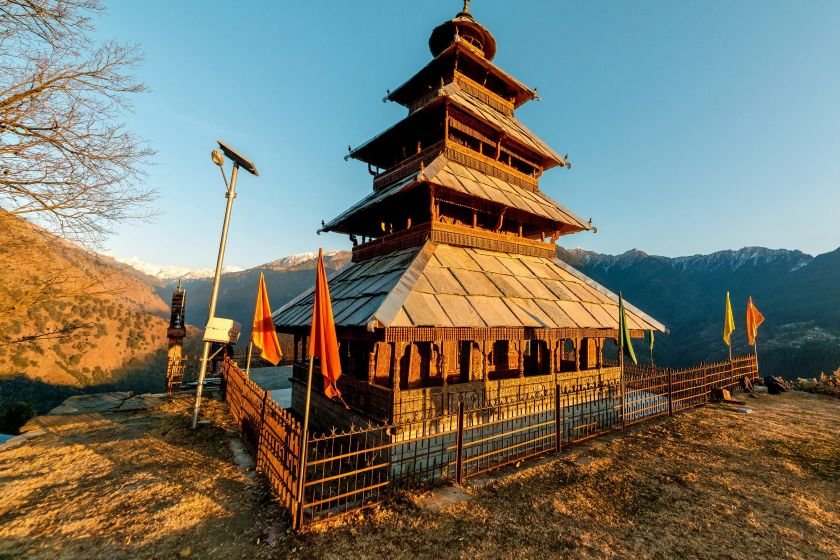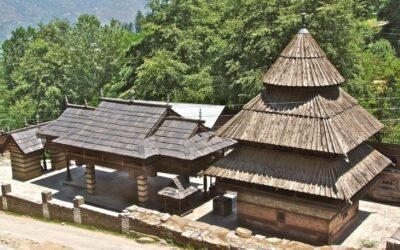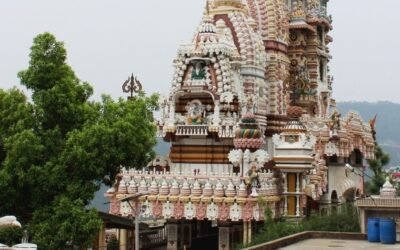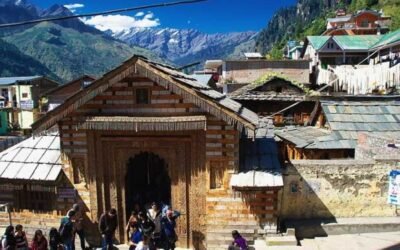Tucked away in the pine-laced lanes of Old Manali, the Manu Temple stands as a solitary sentinel of cosmic origin—the only known temple in India dedicated to Sage Manu, the progenitor of mankind and the first lawgiver according to Hindu tradition. Steeped in myth and meditation, it marks the very ground where Sage Manu is said to have meditated after surviving the great deluge, guided by Lord Vishnu in his Matsya avatar.
🌄 Location & Accessibility
- Location: Old Manali, Himachal Pradesh – 175131
- Altitude: ~2,050 meters
- By Road: 3 km from Manali Bus Stand; cabs and autos available
- By Rail: Joginder Nagar (~145 km) or Pathankot (~290 km)
- By Air: Bhuntar Airport (~52 km)
- On Foot: A tranquil 20-minute walk from Manali Mall Road through traditional Himachali homes and cafés
🛕 Deity & Worship
The Manu Temple honors Sage Manu, believed to be the first human and the compiler of Manusmriti, the ancient text that governs the moral and social order (dharma).
The goddess is also worshipped in the form of three pindis, representing Maha Kali, Maha Lakshmi, and Maha Saraswati—the divine trinity of power, wealth, and wisdom.
Devotees offer red flags, coconuts, and sweets, seeking the sage’s blessings for justice, clarity, and fulfillment of vows. Couples longing for children and individuals pursuing truth and spiritual wisdom often pray here with deep reverence. Chanting of Vedic hymns, simple aartis, and obeisance to the Beas River nearby are integral to the temple’s daily rituals.
🏛️ Architecture & Setting
Built in classic Himachali pagoda style, the temple features a three-tiered wooden roof, carved eaves, and stone masonry base. The temple façade blends rustic simplicity with spiritual stillness, surrounded by cedars, apple orchards, and the crisp air of alpine solitude.
The Beas River flows nearby, believed to purify the soul and amplify one’s prayers. Prayer flags flutter, and temple bells chime softly in the breeze—a meditative soundscape beneath the Pir Panjal sky.
📜 Mythological Significance
According to Hindu cosmology, Sage Manu was chosen to repopulate the Earth after the Great Flood, preserving the seeds of life and knowledge aboard a boat guided by Lord Vishnu. After the waters receded, he is believed to have made Manali his abode, meditating here to compose the Manusmriti, which laid down the foundational principles of governance, ethics, and society.
This ancestral connection makes the Manu Temple a cosmic cornerstone in India’s mythological narrative, revered by scholars, spiritual seekers, and traditionalists alike.
🎉 Festivals & Celebrations
- Manu Jayanti (Chaitra Shukla Navami): A special celebration marked by community havans, storytelling, kirtans, and philosophical discourses
- Guru Purnima: Observed by devotees offering gratitude to sages and teachers through rituals and satsangs
- Fridays & Sankranti: Considered auspicious for offering prayers for clarity in thought and removal of karmic blocks
🏞️ Nearby Attractions
- Hidimba Devi Temple: A few kilometers away, honoring the forest goddess of the Mahabharata
- Beas Kund & Jogini Waterfalls: Ideal for meditation and nature walks
- Vashisht Hot Springs: Healing sulphur springs tied to the sage Vashisht
- Old Manali Market: A blend of craft, cafes, and quiet spirituality
🙏 Spiritual Experience
The Manu Temple is not just a destination; it is a dialogue with the origins of dharma itself. In its stillness, pilgrims hear the echoes of an ancient code—the quiet rhythm of consciousness, conduct, and cosmic law. Surrounded by misty slopes and river murmurs, the temple invites you to trace your steps back to the beginning of being.




